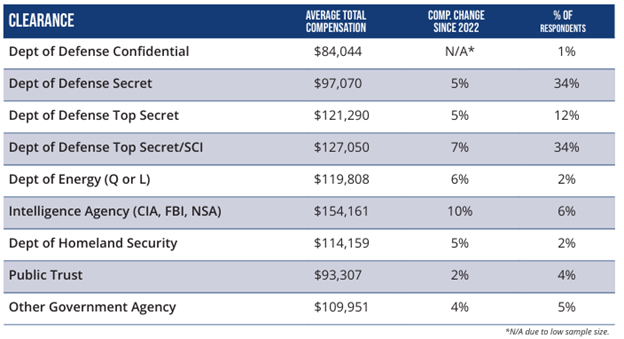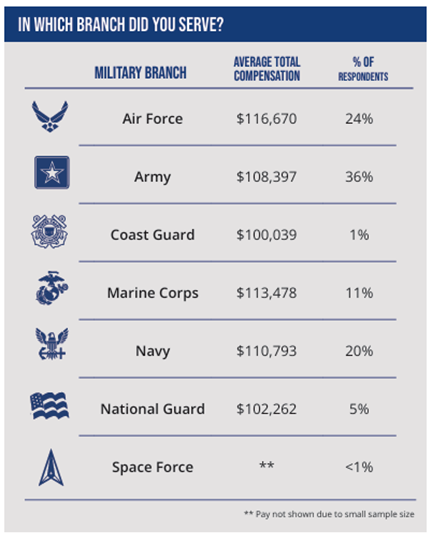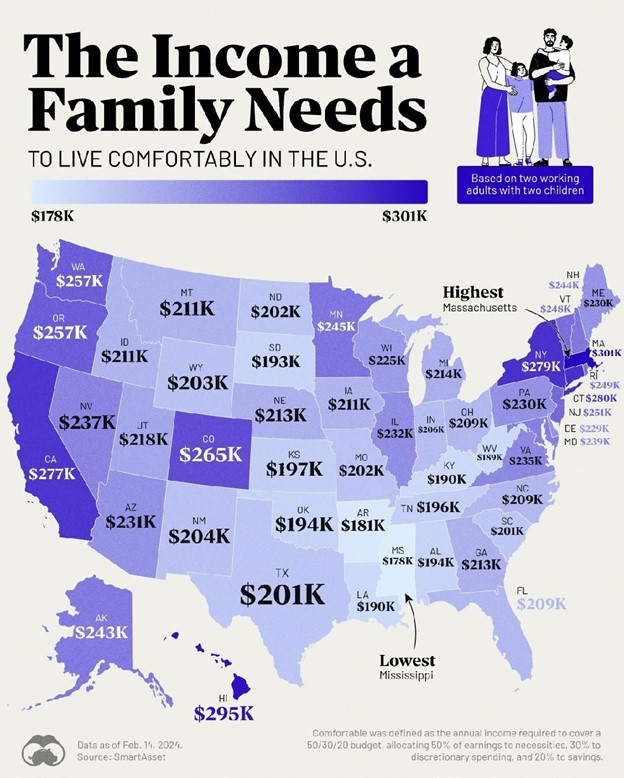Having a valid security clearance after getting out, or even having had a clearance while you were in, is money in your pocket when it comes to finding a job post-military. Why? Because it saves the company time by hiring you; lost time (and production) while the company is waiting for clearance, approval is money lost by the company. While we know that having a clearance makes a difference in salary, there are other factors at play.
Type of Security Clearance
The type of clearance makes a difference in the monetary boost. In the chart below, we can also see the issuing agency makes a big difference.

Data Courtesy of Clearance Jobs.com
As the chart shows, for military veterans having Department of Defense (DOD) clearances it ranges from a low of $84,044 to a high of $127,050. The other important information is the percentage of compensation change since 2022. The DOD clearance with the most change was TS/SCI at 7%. That level of change could indicate there is more of a demand for individuals with that type of clearance, or it could be due to the level of clearance warranting additional compensation.
Military Branch Matters
Another area that influences compensation is the military branch served. The average median annual salary can vary from $100,039 from having served in the Coast Guard to a high of $116,670 for Air Force veterans.
Data Courtesy of Clearance Jobs.com
Education
This is where using your GI Bill wisely can make a difference in your pay as the degree level and major makes a difference in salary. With that said, getting a good-paying job that requires a security clearance is still possible with just a high school diploma. The average annual compensation for a cleared individual at that level of education is $87,287.
However, as the education level increases, so does the level of compensation until it peaks at the Doctorate Level at $154,868. A bachelor’s degree, attainable with 36 months of GI Bill benefits, has an annual median salary of $114,706.
Adding a professional certification to your degree also increases compensation on average by $16,000. For the 54% having at least one certification, their average compensation was $122,420 compared to those not having any certifications at $106,669.
Data Courtesy of Clearance Jobs.com
Location
There are several factors that will drive your selection as to where you live after getting out. Things like weather, family, job availability, etc. However, where you choose to work also affects compensation as it is driven in part by the cost of living in the area. As the chart shows, this holds true with five of the states located on the East Coast. The anomalies are the Midwest states of Colorado and South Dakota.
Of the states listed, South Dakota has the lowest cost of living based on its ranking of 33rd out of the 50 states.
The chart below graphically depicts how location affects the amount of income needed to support a family. This particular graphic uses the 50/30/20 budget – 50% for basic necessities, 30% to discretionary spending and 20% to savings. If you use a different budget formula your numbers may look different. What It shows is that a family of four living in South Dakota can live comfortably on $193,000 per year, whereas that same family living in Massachusetts would need $301,000 per year. This could be the same job, just at a different location.
The bottom line is there are a lot of factors that affect how much money you make after getting out, but one factor that will help your entry into a field post-military is having a valid clearance or being able to get the clearance you had reinstated. Besides veteran preference, a clearance opens job opportunities that would otherwise never exist.









